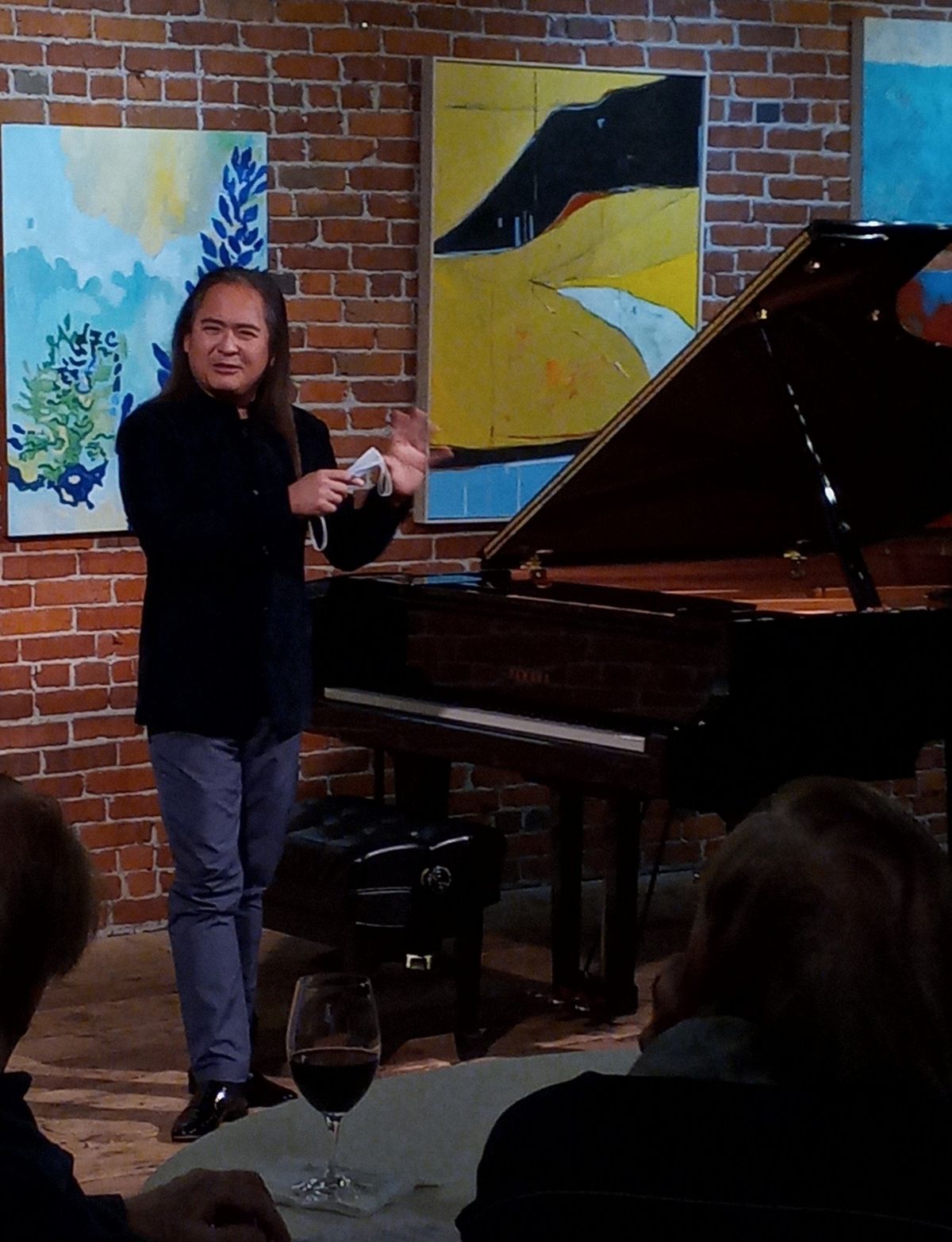Review: Zuill Bailey and Victor Santiago Asuncion are a Northwest BachFest match made in heaven

Zuill Bailey, artistic director of Northwest BachFest, brought pianist Victor Santiago Asuncion to town for two concerts at Barrister Winery. Asuncion, whom Bailey first encountered when Asuncion accompanied Bailey’s idol, master cellist Lynn Harrell, appeared in a solo recital Saturday night and with Bailey on Sunday afternoon in a program of works for cello and piano.
Asuncion’s approach to the piano could serve as a model to anyone aspiring to master the instrument. He remains calm and relaxed regardless of the difficulty of what he is playing, which allows him to move about the keyboard with ease and accuracy and to make delicate adjustments of color and dynamics to suit the demands of the music.
These technical virtues, along with interpretive insight and imagination, were required on Saturday evening, when he presented a demanding program of all four Ballades and all four Scherzos of Frederic Chopin (1810-1849), played almost without a pause.
While Asuncion’s abilities were clear throughout both halves of the concert, there were some marked differences between them. It may be that Asuncion believes Ballades and Scherzos require different interpretive approaches, or perhaps he required time to adjust to the room or to the instrument.
In any case, the first half of the program, containing the four Ballades, saw him taking liberties with what Chopin wrote: altering note values, suppressing dynamic contrasts and rushing some passages while dwelling overlong on others. All this reduced the listener’s pleasure in the many passages performed by Asuncion with beauty and insight.
After an interval of scarcely two minutes, he returned to deliver performances of Chopin’s four Scherzos that were free of the previous shortcomings. All the bright colors, dramatic shifts of emotion and dazzling technical innovations that Chopin packed into his four groundbreaking works were arrayed to see and enjoy, culminating in a performance of the Fourth Scherzo that could stand comparison with the greatest on record.
On Sunday afternoon, Asuncion again displayed his deep sympathy with the Romantic spirit when he opened the program with two arrangements of Bach’s music by pianists representing the final flowering of romantic pianism: Ferrucio Busoni and Egon Petri.
He performed Busoni’s arrangement of the Chaconne from Bach’s Second Partita for Solo Violin and Petri’s arrangement of Bach’s setting of the chorale “Sheep May Safely Graze.” Rather than attempting to make the piano sound like a harpsichord, Asuncion successfully called on its capacity to mimic a symphony orchestra. The result was to realize all of the grandeur, pathos and lyricism that the arrangers heard in Bach’s original creations.
The musical arc of these two concerts went into its steepest ascent, however, when Asuncion was joined by Bailey. This resulted not only from the addition of Bailey’s celebrated qualities, but also from what soon emerged as a symbiosis between the two players. It transmuted Debussy’s late Sonata for Cello and Piano, which often impresses as merely quirky and rather bloodless, into a masterpiece of subtlety in musical dialogue.
It raised the stature of Samuel Taylor-Coleridge’s little-known but charming Variations in B minor. The fact that Brahms’ First Cello Sonata Op. 8 in E minor is an acknowledged masterpiece does not keep it from seeming rather strenuous and academic even in the hands of world-class performers. As performed by Bailey and Asuncion, it was shot through with light and color, simply radiating the composer’s passionate nature.
As high as the musical arc rose during this program, it did not reach its highest point until Bailey and Asuncion returned to the stage to play as an encore the slow movement of Sergei Rachmaninoff’s Sonata for Cello and Piano in G minor Op. 19. It was at a performance by Asuncion with Harrell that included that work – Harrell’s last public performance – that Bailey first heard the pianist.
They spoke at Barrister of how much Harrell, and consequently the Rachmaninoff Sonata, meant to them. Then they sat down to play. What was heard was artistry at a level that few are ever privileged to experience. It was as though both men were animated by a single mind, one that had fully plumbed the depth of what the composer thought and felt. If and when they perform together again, do everything in your power to be in the audience.